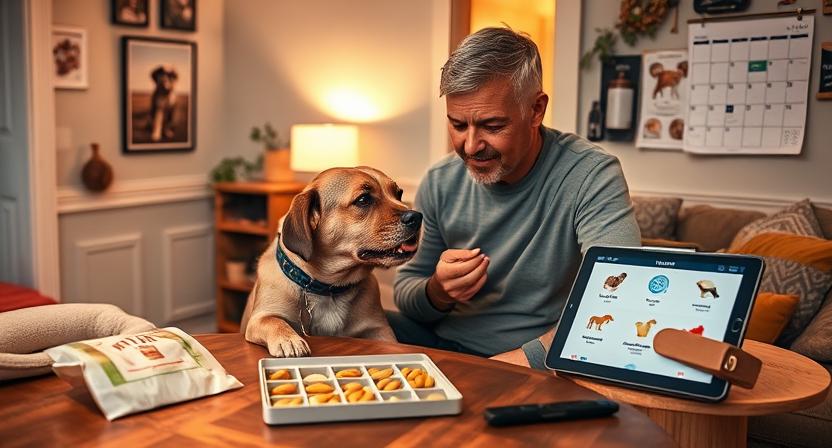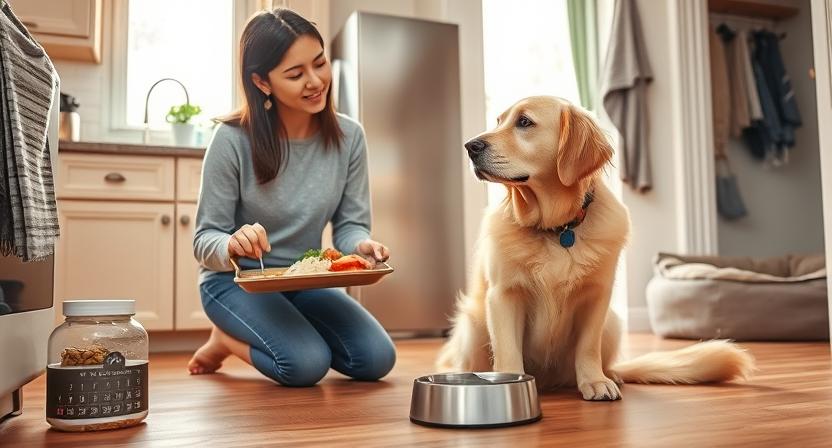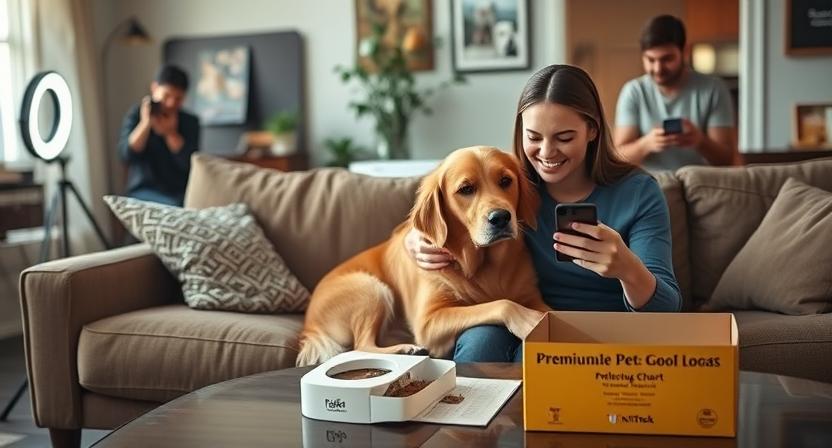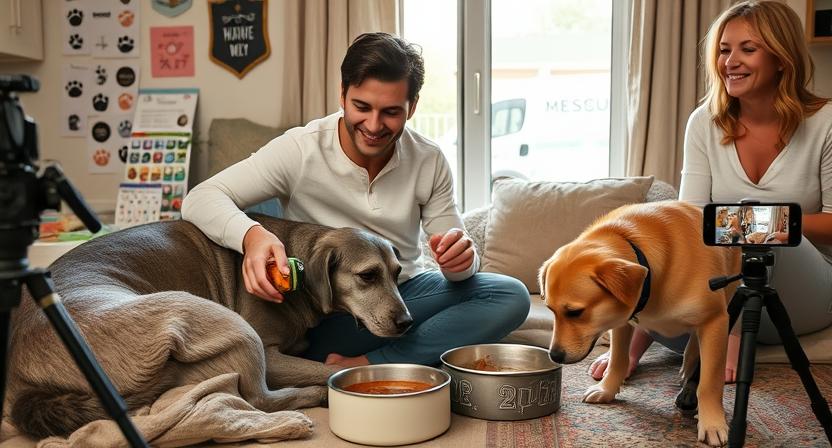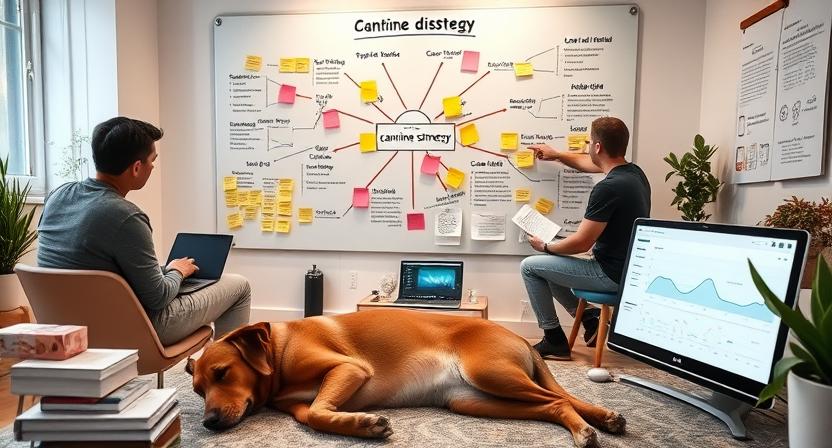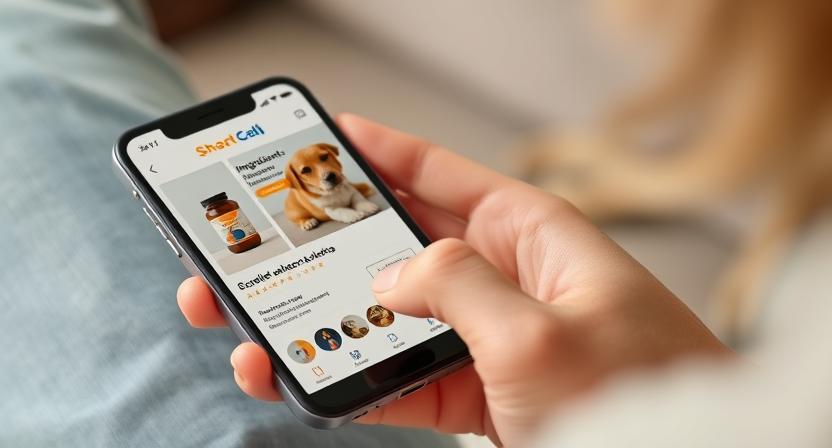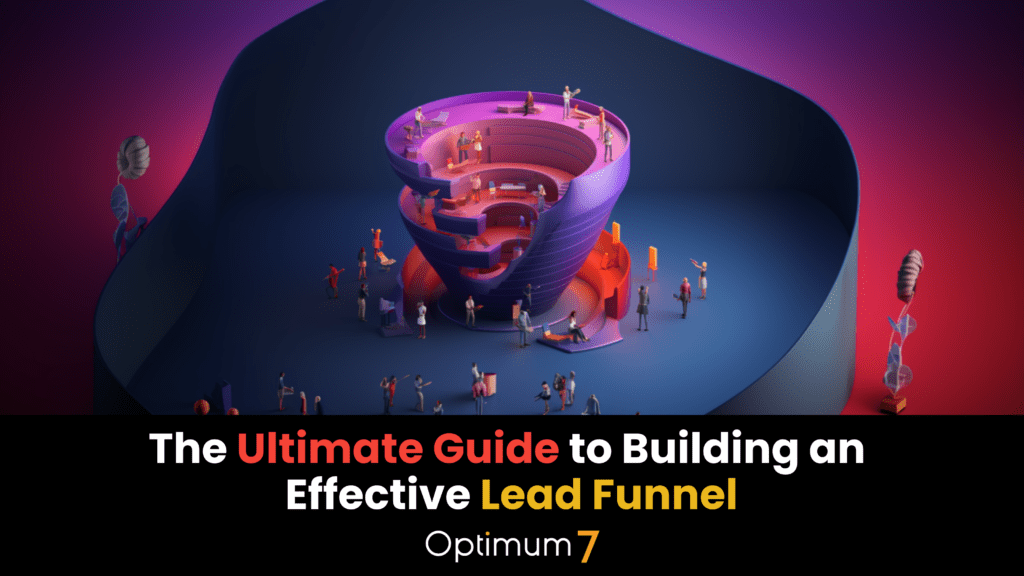For Brands Who Are Done Guessing, and Ready to Scale What Works
You’re Not Failing—But It Shouldn’t Feel This Hard
Let’s be honest—scaling a pet brand in 2025 feels like running uphill in sand.
You’ve already done what most founders never do: you built something that sells. You’ve got traction. A loyal base of repeat buyers. Maybe a product that’s even better than the big names in your category. The problem? Growth hasn’t gotten easier. It’s gotten more chaotic. The playbooks that worked to get you to $1 million aren’t getting you to $5M. And deep down, you know it.
You’re watching CAC climb month after month. You’re pouring time into TikToks and Reels, hoping for another flash of virality—but even the “wins” are getting harder to repeat. Your paid media feels like a treadmill: spend more, convert less. And your organic traffic? Flat. Despite the blog posts. Despite the “SEO agency.” Despite doing what every article told you to do.
You built something real. But it’s leaking. And you don’t have the bandwidth to duct tape it all together anymore.
Maybe you’ve got a beautiful website, but your product pages convert like they’re made of cardboard. Maybe you’ve captured emails and phone numbers, but you don’t have the flows or the segmentation to turn them into revenue. Maybe you’ve partnered with shelters or dogfluencers—but the spike doesn’t stick. And no one’s explained why.
And then there’s the emotional piece.
Because this isn’t just pet food. Or a supplement. Or a camera. Or a chew toy. You’re not selling products—you’re selling peace of mind. Vitality, connection, and more good years. But your marketing doesn’t reflect that. Your brand isn’t telling that story with clarity or conviction. And it’s starting to show in your numbers.
You feel it every time you open Shopify. Every time you look at your Klaviyo campaigns and wonder why the reorder rate dipped again. Every time you lose sleep thinking, “Why does this feel like I’m rebuilding the machine every month?”
This isn’t about motivation. You’re not lazy. You’re not lost.
You’re just operating without a system.
And that’s what needs to change—starting now.
Emotion Is the Hook. But Structure Is What Scales
If you’re selling pet products and not leading with emotion, you’re leaving margin on the table. Full stop.
Pet owners don’t shop with logic. They shop with instinct, memory, guilt, pride, anxiety, and love. You’re not selling freeze-dried chicken—you’re selling a moment of tail-wagging joy after a 12-hour shift. You’re not selling joint chews—you’re selling the comfort of watching their senior lab climb the stairs without hesitation.
And that’s exactly why this market is so powerful. It’s irrational in the best way. Pet parents will pay more for their dog’s salmon than for their own dinner. They’ll subscribe to supplements they’re not even sure are working—because not giving it feels like quitting on someone who depends on them.
But here’s where it breaks down: most brands tap into the emotion once—and then leave it on the table.
They use it in the hero headline: “Give Your Dog the Life They Deserve.” They run a Facebook ad with a slow-motion video of a rescue pup leaping into a bed. Maybe they tell a founder story on the About page. And then… that’s it.
No carry-through. No reinforcement. No segmentation. No structure.
If I dig into your email flows, I shouldn’t just see a 10% off coupon and a standard welcome message. I should see flows triggered by life stage:one for rescue adopters, one for first-time puppy parents, and one for senior dogs who just had a vet visit. Each with its own tone. Its own CTA. Its own proof.
If I land on your website after searching for “probiotics for dog gas,” I don’t want your homepage pitch. I want a PDP built to handle my problem, validate my concern, and show me results from pet owners who said, “I can finally let my dog sleep in the bedroom again.”
Emotion can’t just be in your ads. It has to live inside your structure:
- The segmentation rules in your email platform
- The sequencing of your video content
- The language in your bundles and upsells
- The filter options in your review engine
- The way you organize your blog posts around real questions people ask when they’re scared, curious, or hopeful
If it’s not built into your marketing system, it’s just decoration.
Real growth happens when your emotional promise is operationalized—when every surface area of your brand, from product cards to reorder flows, reinforces what your customer already feels in their gut:
“This brand gets me. And they get my dog.”
That’s when you stop discounting. That’s when LTV rises. That’s when buyers start referring without being asked.
That’s how you scale a pet brand in 2025.
The High-Margin Pet Subcategories Worth Owning
Stop Chasing Volume. Start Prioritizing Margin and LTV.
Scaling a pet brand isn’t about selling more. It’s about selling smart. Most founders chasing volume end up chasing their tails: high SKU counts, shallow AOV, rising ad spend, and zero pricing power.
That’s not growth. That’s survival.
If you want to build a brand with staying power, you need to own the categories that give you leverage. I’m talking high-margin, high-retention, emotionally sticky product verticals that customers reorder not because they’re prompted—but because life without them feels like a downgrade.
Let’s break down the four categories that are defining pet brand success in 2025—and why you should either go all in or build parallel SKUs that stack value on top of them.
1. Fresh, Personalized Subscription Food
High AOV • High Retention • Easy Emotional Justification
This is the holy grail—if you get it right. Brands like Sundays, The Farmer’s Dog, and PetPlate have proven that you can charge $70–$150 per order on autopilot if you lead with quality, show visible health improvements, and educate with transparency.
But here’s the kicker: the product alone isn’t enough. Everyone’s saying “human-grade,” “no fillers,” “slow cooked,” and “vet formulated.” If you want to compete here, your differentiation has to live in the delivery mechanism:
- An onboarding quiz that doubles as a consult, not a gimmick
- Transparent nutrient breakdowns (in plain English, not just % labels)
- Reorder logic that adapts to activity level, weight, seasonality
- Customer service that feels like a concierge, not a ticketing system
If you can nail those, customers don’t just stay—they evangelize.
And the real bonus? This becomes the center of gravity for your bundle strategy. Once a customer is in a food flow, it’s 10× easier to layer in treats, supplements, and accessories. You don’t need more SKUs—you need a product with gravitational pull.
2. Wellness Supplements and Functional Treats
High Margin • Mid-Frequency • Emotionally Driven
From hip and joint chews to anxiety-calming drops to gut-health powders—this category is exploding. Not because people want to medicate their pets, but because they feel guilty when they don’t.
Your job as a marketer here is to connect dots people already feel but haven’t put into words:
- “Is it weird my dog seems stiff when she gets up?”
- “He barks when I leave… is that separation anxiety?”
- “She licks her paws nonstop—is that a digestion issue?”
You’re not just selling a chew—you’re offering a behavioral solution. Something that makes the house quieter, the walks easier, or the guilt disappear.
And if you’re smart, you’ll make the dosage calendar visible. You’ll run a replenishment flow that reminds the buyer how far they’ve come. You’ll share “before and after” anecdotes from customers. And you’ll lead with video, not just claims.
There’s price elasticity here. But only if you show outcomes.
3. Smart Pet Tech and Accessories
Mid Margin • High AOV • Utility Meets Lifestyle
This is where brands like Fi and Fable are playing: GPS collars, smart feeders, cameras with treat dispensers, or sleek harness systems that belong in Apple stores. The play here is different—it’s not necessarily about frequency. It’s about the one-time purchase that upgrades the entire owner experience.
These aren’t daily use items—they’re lifestyle enhancers. But they’re not impulse buys either. So you’ll need content that earns the trust:
- Side-by-side comparisons with legacy brands
- Breakdown of long-term savings (vs. hiring walkers or dealing with vet anxiety)
- Customer video testimonials showing real behavior change
And then you integrate the emotional side: “Sleep through the night again.” “Stop worrying every time your dog bolts.” “Never forget a feeding again.”
If your product fixes a recurring frustration and looks good while doing it? You can charge a premium—and justify it.
- Sustainable, Eco-Conscious Essentials
Modest Margin • High Shareability • Emerging Category
If you’re targeting Gen-Z or early-millennial pet parents, you need to pay attention to what they care about. Biodegradable poop bags. Recycled fill in dog beds. Packaging that doesn’t look like it came from 2005.
The truth is, no one brags about their leashes. But they will brag if it’s made from cactus leather. And they’ll share a photo if your brand story makes them feel like a better person—not just a better owner.
This is where storytelling and sourcing transparency become conversion assets. Show your process. Film your facility. Make your carbon footprint part of your product’s selling proposition.
Even if the margins aren’t incredible, this category amplifies your shareability, increases UGC, and gives you a mission moat. That matters.
Which One Should You Choose?
You don’t need all four.
In fact, most brands scale faster when they focus on dominating just one—with supportive SKUs orbiting around it. If you’re doing $1–$5M and your catalog looks like a general store, that’s a red flag. You’re diluting your margin and attention.
Pick your center of gravity. Then build your retention, bundles, content, and media around it.
That’s how you stop guessing what to launch next—and start building around what actually moves the business.
Social Media in 2025
Turning Likes Into Leads—and Followers Into Real Revenue
Social media isn’t optional for pet brands. But here’s the part no one tells you: attention doesn’t convert by default. You can post the most heartwarming dog rescue story, rack up 60,000 likes, get shared by influencers and animal shelters across the country—and still log into Shopify at midnight and see $0 in added revenue.
That’s the gut punch most operators know all too well.
You don’t have a social media problem. You have a conversion architecture problem.
If you’re still treating social like a top-of-funnel playground instead of a fully integrated part of your growth engine, you’re working ten times harder than you need to. And you’re letting your best leads slip through your fingers.
Let’s fix that.
Instagram & Meta: Your Warm Audience Has Been Waiting
Instagram hasn’t disappeared—it’s matured. And in 2025, it’s less about grid curation and more about commerce clarity. Your top priority isn’t to get more followers. It’s to create fewer friction points between your content and your checkout.
That means:
- Shoppable Reels with product tags—every piece of video content should function like a micro-PDP.
- Product Highlights organized by use case—not “Collars,” but “For Pullers,” “For Puppies,” “For Seniors.”
- Pinned Posts that reinforce your value prop: “Our mission,” “Why our food works,” “How our customers feed it.”
But more than anything: stop treating your IG feed like a brand museum. It’s not your portfolio—it’s your storefront. And people aren’t just browsing. They’re deciding if you’re the one they trust with their dog’s gut health or their cat’s comfort.
Add your quiz link in your bio. Use Linktree or custom dev to segment mobile traffic by buyer type. Route users into SMS capture and send instant incentives. This isn’t “social media management.” It’s a funnel design.
TikTok: The Engine for Discovery—But Only If You Can Hold It
Everyone’s obsessed with TikTok, and for good reason. It’s still the best platform for rapid awareness. But here’s the truth operators know: attention doesn’t equal retention. Views don’t equal checkouts. And even when they do, they rarely come back unless you have the system to hold them.
So how do you actually use TikTok to grow—not just spike?
You script for sequels. You use faces, not logos. You sell benefits through storytelling, not features through “drops.” And you have your infrastructure ready to catch the traffic.
Here’s what that looks like:
- A short “POV” style video from the dog’s perspective: “When mom finally switches to fresh food…”
- A follow-up part 2 with customer reactions: “I got 300 DMs after this. Here’s what people asked.”
- A pinned comment leading to a “feeding quiz” that drops the user into your Klaviyo welcome flow.
- A Spark Ad run to the top-performing UGC, whitelisted from the creator’s handle—not yours.
- A SMS opt-in that fires a 24-hour post-quiz offer to push conversion while the excitement’s fresh.
Virality is great. But if your product page isn’t built to reinforce what the video promised, you’ll lose them. You’re not just selling food. You’re selling the moment someone sees a dog like theirs thrive—and thinks: “I want that.”
TikTok is just the ignition. The engine is what you do after they click.
Pinterest & YouTube: The Silent Compounding Channels
They don’t get the spotlight, but Pinterest and YouTube are still quietly driving long-tail discovery—especially for evergreen content like feeding schedules, new pet parent routines, or comparisons between different product types.
Pinterest should house:
- Pin-friendly graphics: “5-Step Gut Health Routine” or “How to Transition to Fresh Food”
- Breed-specific feeding charts
- Re-shareable “My Senior Dog’s Routine” guides linking to product bundles
Use them to feed traffic into your core SEO assets. Think of Pinterest as visual SEO. If someone’s looking to “build a morning routine for a rescue pup,” you want to be what they find.
And on YouTube?
Create long-form content that reinforces product trust:
- “Raw vs. Kibble: What My Vet Thinks After 6 Months”
- “Tracking My Dog’s Digestion for 30 Days (With Before/After Lab Results)”
- “Building a Feeding Routine for My Reactive Rescue”
Then turn those into Shorts that link back to your PDPs and blog posts.
The bonus? YouTube content lasts. It gets better over time. TikTok gives you 3 days of traction. YouTube gives you three years.
If It Doesn’t Build Your List, It’s Not Working Hard Enough
This is the one hill I will die on: if your social content isn’t building your owned audience, you’re one algorithm tweak away from vanishing.
Every video, every post, every comment section is an opportunity to capture email or SMS—so you can own the conversation, not rent it.
Use UGC giveaways, quizzes, early access offers, or loyalty points. Create social-to-quiz funnels. Build flows that convert the top 20% of social viewers into owned leads. Don’t just say “follow us.” Say “join our pack.” And make it worth it.
Because in the pet category, emotional momentum fades fast. You need to be able to follow up—at the right time, on the right channel, with the right message.
When social works, it feeds your funnel. When it doesn’t, it just feeds your ego.
Influencer & Community Marketing in 2025
Why Nano Creators Outperform Celeb Pets—And How to Turn Community Into Compounding Trust
At this point, you’ve probably tried influencer marketing. You might’ve sent a product to a famous dog with 250k followers, gotten a post, maybe even some comments, and then… crickets. No spike. No sustained traffic. Just a line item on your budget that made you feel like you “did something.”
This is the trap.
In 2025, influencer marketing for pet products isn’t about buying one-off posts. It’s about building long-tail ecosystems of trust with real people—and amplifying their voice through your infrastructure.
It’s not about the biggest reach. It’s about the right reach.
Let me show you how.
1. The Nano Creator Advantage
(Under 5,000 Followers. Over 5,000 Times More Trust.)
We’ve run campaigns with every tier of creator—from rescue shelters to pet TikTokers to trainers with 400,000 subs. And here’s what consistently works best:
Moms with two dogs and 3,200 followers.
Trainers with 1,900 followers who answer every DM.
Foster volunteers who post daily updates about the 12-year-old lab they just saved.
These people don’t just post. They engage. Their followers trust them—not because they’re “influencers,” but because they’re real.
And when they say, “We switched to because it finally helped with Sammy’s gut problems,” that message lands harder than a polished studio testimonial.
Why? Because their followers see themselves in the messiness. The fence-sitting. Trying and failing and trying again.
If you can find 10 of these people per quarter—feed them product, give them education, and amplify their voice—you don’t just win content. You win trust.
And trust converts longer than reach.
2. Community Isn’t Just a Vibe—It’s a Retention Lever
Too many brands think of “community” as a Slack group, a Facebook page, or a Discord server they’re too busy to moderate.
But here’s the truth: community is every point of connection your customers feel that makes them think, “I’m not the only one.”
It’s your reply to their comment within 2 minutes of their first UGC post.
It’s you resharing their testimonial on your IG Stories and tagging them.
It’s emailing a customer after they submit a review and saying, “Hey—we’re building a new joint chew formula for large breeds. Want to beta test it?”
That’s not scale. That’s connection.
And connection keeps people around longer than discounts ever could.
Your goal? Build systems around this. Not just random acts of empathy.
Set automations that trigger alerts when certain phrases appear in reviews.
Have your CX team segment VIPs by LTV and create special content requests.
Turn your Gorgias or Zendesk inbox into a UGC pipeline.
Community isn’t built in your DMs—it’s built in your back end.
- Rescue Shelters: The Overlooked Channel with Built-In Emotion
Want a content strategy that drives local trust, real traffic, and UGC that actually converts?
Partner with 3–5 local rescue shelters in your top customer states. Offer product donations for every adoption. Create co-branded content. Sponsor “Adoption Starter Kits” with your food or toys or supplements.
It’s a win-win. They get support. You get heart-driven content that doesn’t feel like an ad. And you instantly associate your brand with new beginnings, second chances, and transformation.
Run paid media to the stories that come out of it. Turn it into a blog series. Use the shelter’s mailing list to offer welcome bundles for first-time adopters.
Want emotional LTV? Help someone extend a rescue dog’s life by two years. They’ll never leave you.
4. UGC That Doesn’t Die in the Feed
The problem with most influencer content is that it dies as soon as the post leaves the screen. That’s because most brands don’t secure rights, don’t organize it, and don’t build paid creative from it.
Here’s what to do instead:
- Every influencer you work with should sign a simple content rights agreement.
- Use tools like Archive, Motion, or Triple Whale to tag and store UGC by SKU or funnel stage.
- Build Spark Ads on TikTok using their native handles—but control the budget and targeting.
- Use UGC in email: “Here’s how Emily helped her anxious rescue sleep through the night with our chew.”
- Use UGC in landing pages: before/after gallery, breed-specific results, “real stories” blog feeds.
- Use UGC in SMS: 1:1 reply triggers based on what the customer viewed.
Content isn’t your bottleneck. Activation is.
When you finally treat UGC as creative equity—not just one-time posts—you build a brand that reflects back the lives of the customers you serve.
And that’s what sells.
SEO and Content Strategy in 2025
Why Topical Authority—Not Just Blog Posts—Is What Drives Growth
Let’s be real for a second. If you’re spending money on content that doesn’t tie directly back to sales, you’re wasting time—and probably doing SEO the way it was done in 2015.
It’s not your fault. Most agencies will sell you “four posts a month,” throw in a couple of keywords, maybe drop in a stock photo of a dog, and call it a strategy. Then they send you a report showing an increase in “organic sessions,” as if that means anything.
Here’s the truth. Traffic without purchase intent is vanity. And content without authority is invisible.
If you want to scale your pet brand in 2025, you don’t need “SEO.” You need a structure that tells Google—and your customers—exactly what you’re the best at.
That structure is called topical authority.
The Problem With Most Pet Brand Content
Most scaling brands treat their blog like a kitchen junk drawer. One week they’re writing about training tips. Next it’s flea prevention. Then they’ll publish a “What to Pack for Dog Travel” guide just to hit a monthly content quota.
And nothing ranks. Nothing converts. And nothing builds momentum.
Why? Because Google’s not looking for random information. It’s looking for structured expertise.
In 2025, especially with SGE (Search Generative Experience) rolling out across search, Google is curating sources, not just surfacing content. It’s pulling from domains it trusts. That means if you want to show up—even indirectly—you need depth. You need relevance. And you need a site that screams, “We are the authority on this problem.”
Start With One Core Problem You Solve
If you’re selling gut-health supplements, you should own every question, concern, and confusion around canine digestion.
That means building a dedicated pillar page—your “hub”—that explains everything a pet owner would need to know about the topic. Not 800 words. We’re talking 3,000+ words of actual substance. Transparent, educational, outcome-driven content. Think “The Complete Guide to Canine Gut Health.”
Then, you build your cluster content around that hub—each piece addressing a specific, long-tail question.
Articles like:
- “Best dog food for acid reflux”
- “How to tell if your dog’s gas is a health issue”
- “Transitioning your dog to a fresh food diet without upsetting their stomach”
Each article links to your hub. The hub links back out to them. Everything is internally connected. Everything is clearly related. And all of it is pointing back to your product page—not in a pushy way, but with logic that aligns with the user’s journey.
Google crawls this, understands the structure, and starts trusting your site as an authority on the subject. Now, when someone searches for related terms, your content isn’t just considered—it’s cited.
Schema Is Not Optional Anymore
This is the technical layer that most content creators ignore—but you can’t afford to.
Schema is what allows Google to understand what type of content it’s looking at. It’s also how your content gets selected for rich snippets, voice results, and citations in AI-generated summaries.
You should be using:
- FAQ schema on every relevant post
- Article and author schema to build EEAT (Experience, Expertise, Authoritativeness, and Trust)
- Product schema on every PDP and bundle
- Speakable schema for how-to guides and tutorials
If this sounds like jargon, that’s because your SEO provider has likely been phoning it in. These are not “extras.” They are now foundational.
Don’t Write for Everyone. Write Deep for Someone.
You don’t need 300 blog posts. You need 30 that matter.
The more focused your content is, the faster your domain authority grows. So if your product addresses one primary use case—whether it’s anxiety, digestion, joint support, or raw feeding—you should double down on that before you touch anything else.
You’re not trying to become Wikipedia for pet owners. You’re trying to become the go-to source for a very specific concern. When you do that right, customers will feel it. And Google will too.
Content Must Serve the Funnel—Or It Doesn’t Belong
Let’s talk measurement. The goal isn’t just to rank. The goal is to drive action.
That means you should be able to answer the following questions clearly:
- How many people who read a blog post also visited a PDP?
- How many blog readers subscribed to your email or SMS list?
- How long are users staying on these pages—and what do they click next?
- Which posts are actually contributing to revenue, and which are just noise?
If your content isn’t building traffic, list growth, or conversions—something’s wrong. You’re not here to blog. You’re here to build a machine that brings in buyers. And SEO, done right, becomes the most profitable channel in that machine.
It compounds. It builds authority. It reduces CAC over time. And it gives you leverage in a world where paid is getting more expensive by the week.
But only if you take it seriously.
Lifecycle Marketing in 2025
Retention Isn’t a Campaign—It’s a System Built to Print LTV
If you’re serious about scaling your pet brand past $5M in 2025, you have to stop treating email and SMS as promotional tools. They’re not just for sending sales and new product announcements.
They are your second funnel.
They are the engine that turns first-time buyers into subscribers.
They are the system that moves a $42 AOV to $112 in 90 days.
And they are the difference between a brand that bleeds acquisition spending and one that generates compounding margin.
Lifecycle marketing is not optional anymore. It’s your leverage. To get that leverage, you have to stop running “flows” and start designing experiences.
The Welcome Flow: Your Most Underrated Asset
This is your onboarding. Your handshake. Your shot at building trust before the buyer even opens the box.
A real welcome flow is more than “Thanks for subscribing!” followed by a 10% off code and a product carousel. That’s lazy. That’s what everyone else is doing. And it’s why their open rates are in the gutter.
Instead, structure your welcome like an orientation sequence.
Email 1: Share your founding story—not in a hero’s journey way, but in a way that connects to your buyer’s fear. “We built this because our dog got sick. We didn’t want anyone else to guess about ingredients again.”
Email 2: Explain the product’s core function—show results, testimonials, vet quotes, and comparison charts that make the customer feel like they just got smarter.
Email 3: Introduce the team behind it. Your vet. Your sourcing expert. Your support rep. Make the brand feel human, competent, and invested.
Email 4: Offer the first-time purchase CTA—but do it as a milestone, not a sale. “Ready to start your pet’s gut health journey? Let’s build your plan.”
Set this flow to adapt based on quiz answers or lead magnet entry. Your welcome experience should not be one-size-fits-all. A senior rescue dog owner needs different messaging than a first-time puppy parent. Don’t skip the segmentation. It’s the key to higher conversion and lower churn.
The Post-Purchase Flow: Extend the Experience, Not Just the Order
Most brands send a shipping confirmation and maybe a review request. That’s it. That’s a massive miss.
Your post-purchase flow should be about one thing: making your buyer feel like they made the right choice—and preparing them for their next one.
Email 1 (Day 1): Confirmation + emotional reinforcement. “You just made your dog’s next 30 days better. Here’s what to expect.”
Email 2 (Day 4): Education. “How to transition to our food without causing digestive issues.” Include tips, feeding schedules, and vet advice.
Email 3 (Day 10): Early outcomes. “Here’s what other customers noticed after 2 weeks.” Show videos, quotes, and small wins.
Email 4 (Day 18–20): Replenishment logic. “Based on your order size, you’ll be running low soon. Ready to refill?”
Include dynamic blocks that recommend complementary SKUs based on past purchases. If someone bought a joint chew, offer a lick mat or enrichment toy. This is where AOV starts to stack.
The Replenishment & Winback Flow: Timing Is Everything
You should never let someone run out of your product without hearing from you.
Set dynamic replenishment flows based on expected consumption (adjusted by weight, breed, and frequency). If someone orders 30 chews and your average dog uses one per day, you should be emailing by Day 22.
Don’t just send a reminder. Send urgency.
“Only 4 days left of gut support. Let’s make sure your dog doesn’t skip a beat.”
Add friction-free CTAs—reorder in one click, SMS reorders with reply-to-buy, wallet integration.
And if they don’t come back? Don’t vanish. That’s when the winback flow starts.
Email 1: “We noticed your cart’s been quiet. Is everything okay?”
Email 2: “Still helping other dogs like yours—see what’s new.” Include updated results, UGC, or product improvements.
Email 3: “Welcome back gift—$10 credit on us.” Anchor the credit to a personalized bundle, not just a generic offer.
This is your shot at making the returning customer feel revalued—not chased.
Want to See It in Action?
If you want to dive deeper into how lifecycle marketing can transform retention into a profit engine, check out our full case study on how we rebuilt FLOJOS’ email marketing system—designing a lifecycle that’s as relaxed and reliable as the brand itself.
SMS Isn’t Just for Promotions
If you’re only using SMS for sales alerts and shipping confirmations, you’re missing the most powerful one-to-one channel you have.
Use it for:
- Delivery alerts with a soft CTA (“Just landed at your door—your dog’s about to be pumped”)
- Post-purchase education (“Want help with feeding transition? Reply YES.”)
- Quick replies for next-order personalization (“Is your dog loving the joint chews? Text 1 for yes, 2 for no.”)
Keep it tight, clear, and human. Use natural language. Sign off with a name. And always give an easy out—respecting consent is how you keep trust.
Retention Isn’t About Discounts. It’s About Confidence.
Pet brands that win don’t just market to first-time buyers. They build infrastructure around the second and third order—because that’s where margin lives.
You’re not just selling a product. You’re earning the right to be part of someone’s routine. And the only way you get that right is by showing up—consistently, with clarity, at the right moment, with the right message.
That’s what a lifecycle is.
It’s not about automation. It’s about intimacy, delivered at scale.
And once you build it right, it pays off every single day—even while you sleep.
Conversion Optimization in 2025
Why Your PDP Is Costing You More Than Your Ads—and How to Fix It
If you’re getting traffic but not getting transactions, it’s not your traffic’s fault. It’s your site. Specifically, it’s your product detail page.
Most founders obsess over landing pages, influencer content, ad creative, and social proof—but when it comes to the place where the actual sale happens, they default to the Shopify theme template and a couple of lines of copy.
And then they wonder why conversion rates are stuck at 1.2%.
Here’s the reality: Your PDP is your salesperson. It does the convincing. It answers the questions. It justifies the price. It seals the deal. And when it’s weak, nothing else matters.
Let’s break down what you need to fix.
The First 7 Seconds: You Either Earn Attention or You Don’t
When someone lands on your product page—especially from paid or organic—they give you a few seconds. That’s it. If what they see doesn’t build instant clarity, trust, and momentum, they’re gone.
The first viewport (what they see before scrolling) needs to do four things:
- Show the product in use with an actual pet—not a render, not a bottle shot
- Make the benefit crystal clear. Not “Joint Chew Supplement” but “Help Your Senior Dog Climb Stairs Again”
- Build trust through a review count, badge, or quote. You don’t need a full carousel here—but you need proof
- Give a CTA that doesn’t scream “buy now” but instead guides: “Start with a 14-day trial” or “Build your pet’s bundle.”
No one reads long paragraphs at the top of the page. They scan. Your job is to give them a reason to slow down.
Middle-of-Page Structure: Eliminate Doubt, Add Context
Once someone scrolls, they’re interested—but cautious. This is where your conversion wins or dies. Don’t overwhelm with endless content. Guide them through a simple narrative:
- Ingredient Breakdown: Show what’s in it and what it does. Use icons, callouts, and even sourcing maps if relevant.
- Why It Works:Explain the mechanism, ideally with pet-friendly language. If it’s a probiotic, explain how it works in the gut—not with science jargon, but with clarity.
- Customer Outcomes:Insert a few UGC testimonials with photos. Preferably sorted by use case or dog type (senior, rescue, small breed).
- Comparison Table: Show how your product stacks up against other options. Side-by-side breakdowns of ingredients, outcomes, sourcing, and shipping.
- Guarantee or Risk Reversal:30-day satisfaction. Palatability guarantee. Free exchange. Remove friction.
This middle section should be dense with value but easy to digest. Use spacing, clear headers, and keep the tone human—not clinical.
The Offer Itself: You’re Not Just Selling a Product. You’re Selling a Plan
Too many brands slap on a price and an “Add to Cart” button and call it a day. That’s lazy. Especially in the pet space, where buyers want to feel supported, not sold to.
Here’s how to reframe your offer:
- Provide bundle options:Let users pick a starter kit, subscription plan, or one-time try
- Explain the logic behind each option:“Perfect for first-timers,” “Designed for 30-day gut reset,” “Vet-recommended daily protocol”
- Show value: Highlight the cost per day. “Just $1.20/day to improve joint mobility”
- Default to subscription, but allow easy opt-out. Don’t trap them—invite them
- Add dynamic cross-sells: If they’re buying food, offer a digestive add-on. If they’re buying chews, offer a slow feeder. But only if it makes sense
Think of the product not as an SKU, but as a starting point. Help the buyer feel confident about what’s next.
Trust Elements: Subtle Signals That Close the Gap
Here’s what every conversion-optimized PDP has—even if you don’t see it at first glance:
- Real reviews with photos and filters (by age, breed, use case)
- Star rating under the headline, not buried below
- “As Seen In” press logos above the fold
- Palatability or satisfaction guarantee badge within one scroll
- Estimated shipping date based on location (not just “Free Shipping”)
- Live chat or Help CTA visible within the add-to-cart window
Trust is a hundred little things done right. You don’t need a heavy-handed badge or flashing banners. You just need to reduce friction, preempt hesitation, and give people the confidence to move forward.
Mobile First, Always
Your desktop site might look stunning. Doesn’t matter. If your mobile PDP takes longer than 2.5 seconds to load, doesn’t show the product clearly above the fold, or hides the price behind a scroll—you’re bleeding revenue.
Run your PDPs through Google’s PageSpeed Insights and fix your mobile responsiveness. Prioritize tap targets, image loading, and form field size. If the site isn’t a joy to shop on mobile, you’re invisible to half your customers.
Conversion optimization isn’t about tricks. It’s about respect.
You’re asking someone to spend real money on something they’re trusting with their pet’s health, happiness, or longevity. Your job is to make that decision easier—by being clearer, faster, and more empathetic than anyone else.
This is where your marketing either works… or disappears.
Paid Media and Retargeting in 2025
How to Stop Buying Attention—and Start Buying Growth
If you’re spending $10,000+ per month on paid ads and still wondering why your LTV feels soft, your CAC is climbing, and your ads are starting to fatigue after 72 hours, you’re not alone. This is exactly where most $1M–$5M pet brands stall.
Not because they don’t have a product people want. But because they’re still treating paid media like a faucet—more spending equals more sales. And then they panic when the flow slows.
The truth is, paid media is not your growth strategy. It’s your amplifier.
And if the message, the offer, and the system behind it aren’t built to scale—your CAC won’t just rise. It’ll kill your cash flow.
Let’s break down how paid media actually works in 2025 for pet brands. And how to build a strategy that feeds itself.
Know Your Angles—Not Just Your Creatives
Most brands go straight to design. New UGC. New copy. New edits. But that’s not where the money is. The money is in the envelope.
You can show the same product in 10 ways, but only one of those narratives speaks directly to the pain your buyer is actually feeling.
If you’re selling joint chews, you’re not just marketing ingredients. You’re marketing:
- The moment the stairs aren’t a struggle anymore
- The sigh of relief when their dog runs again
- The guilt they feel when their senior dog looks at them like, “Why can’t I move like I used to?”
Each of those is an ad angle. Each deserves its own video, its own hook, its own landing page. That’s how you stop guessing—and start systematizing creative that works.
Start every campaign by mapping out three angles: functional, emotional, and lifestyle. Then test fast, kill what doesn’t move, and amplify what does.
Don’t Chase Cold. Nurture Warm.
It’s easy to spend $20k/month trying to find new buyers. It’s harder—but smarter—to spend $8k/month warming up the ones who’ve already shown intent.
Your retargeting stack in 2025 should include:
- Viewed Product → PDP retargeting with testimonial-based UGC
- Added to Cart → 72-hour reminder with benefit-focused messaging, not just price
- Engaged on Social → Nurture sequence with comparison charts or emotional proof
- Watched Video >50% on TikTok or Meta → Feed more educational content and redirect to the quiz.
You don’t need 20 different audiences. You need 4–5 high-intent pools with creative that meets them where they are.
For example, if someone visits your “gut health for dogs” page, they shouldn’t be seeing a generic chewables ad. They should be seeing a customer video that says, “My vet told me my dog’s digestion was off. I didn’t know where to start. Then I found this…”
Precision beats volume. Every time.
TikTok for Awareness. Meta for Retargeting. Google for Bottom Funnel.
This isn’t a rule—it’s a pattern. And for most pet brands, it works.
TikTok is still the best channel for unlocking cold traffic at scale. But you can’t just throw up a “funny dog video” and expect it to convert. Use TikTok to build awareness through POV storytelling, creator testimonials, and challenge-based virality. Then retarget that attention on Meta—where buyers are more primed to click, browse, and buy.
Google, meanwhile, is your closer. Branded search, competitor terms, and bottom-funnel queries like “best probiotics for dog gas” or “dog anxiety chews reviews” should be owned with high-converting landing pages. Not just your homepage.
If your media strategy isn’t coordinated across these three platforms, you’re fragmenting the customer journey. Build creative messaging that flows from one touchpoint to the next.
From awareness to interest to consideration to checkout.
Don’t Send Paid Traffic to Your Homepage
This should go without saying in 2025—but we still see it.
Your homepage is not your best closer. It’s a billboard. If someone clicked on an ad about digestion, they shouldn’t be dumped into a menu of leashes, toys, food, and a 5-second brand video.
Send them to a purpose-built PDP or landing page with a singular message, singular CTA, and content that mirrors the promise of the ad they clicked.
If you don’t control the path, you’ll lose them at the fork.
Paid Media Isn’t About ROAS. It’s About CAC to LTV.
Stop obsessing over ROAS in a 7-day window. Especially in pet.
If your product takes 2–3 weeks to show visible benefits, and you haven’t built your LTV model around that, you’re optimizing for the wrong metrics.
Build your CAC targets around your second and third purchases. Structure your email and SMS to catch those reorders. Then spend aggressively—but intelligently—on acquiring the right buyer.
Not the one who wants a 20% discount.
The one who wants to believe their dog’s next 12 months will be better because of what you made.
That’s who you’re advertising to.
And that’s how you scale with confidence.
Strategy, Implementation & Realistic Results
Why Pet Brands That Scale Don’t Just Try Things—They Build Things
You’ve probably read a hundred blog posts that all sound the same. Do SEO. Try Klaviyo. Post on TikTok. Run Meta ads. Use UGC. A/B test your headline.
And you’ve probably tried most of them. Some worked. Some didn’t. But none of them—on their own—moved the needle consistently.
That’s because tactics don’t scale. Systems do.
At $1M–$5M, you’re beyond survival mode. You have traction. You’ve found something people want. But now you’re running into infrastructure friction—fragmented tools, shallow messaging, inconsistent email flows, content that gets views but not sales, ads that work once but never again.
That’s not a product problem. That’s a strategy problem.
So let’s talk about what strategy actually looks like at this stage—and how to implement it like a business owner, not a content creator.
The Pillars of Scalable Growth: What Your Business Should Look Like
If you want to break through $5M and do it with margin, control, and brand equity, your company needs three things firing in sync:
- A clear positioning system: Who you’re for, what emotional problem you solve, and how your product is visibly better
- A performance engine: Paid + lifecycle + conversion architecture, designed to pay back CAC within 60–75 days
- A trust stack: Organic content, UGC, retention flows, and operational excellence that keeps people coming back without begging
These aren’t departments. They’re dependencies. If one is weak, the others collapse under pressure. You can’t outspend bad retention. You can’t rank if your site is a mess. You can’t convert if your PDP doesn’t do the selling.
You don’t need perfection. You need alignment.
What Implementation Actually Looks Like
Here’s what we’ve done with brands who scaled past $5M in the pet space—and what your roadmap should reflect.
Phase 1: Audit & Clarify (2–3 weeks)
- Map current CAC and LTV
- Identify most profitable SKU or sub-category
- Review email/SMS flows, open rates, CTRs, and retention curves
- Check Google Search Console for indexation and authority gaps
- Review site speed, mobile UX, and PDP hierarchy
Phase 2: Core System Overhaul (4–6 weeks)
- Rebuild or refine welcome, replenishment, and winback flows
- Launch structured SEO cluster around primary customer pain point
- Deploy 3–5 pieces of UGC based on your three best-selling angles
- Set up retargeting ads based on behavior, not just traffic source
- Restructure PDP to focus on outcomes, not features.
Phase 3: Scale & Learn (8–12 weeks)
- Start testing acquisition offers at the angle level, not just product
- Run 60-day retention and reorder cohort analysis
- Build loyalty or ambassador program seeded from best customers
- Launch second SEO vertical or conversion-optimized blog series
- Double down on top-performing lifecycle segments.
This is the cycle. And when you treat it like a system—not a guessing game—you get leverage.
What Results Actually Look Like (No BS)
Let’s not pretend SEO doubles your business in a month. Or that a better PDP adds 3 points of conversion overnight.
What happens when you implement this properly?
You get cleaner data. You learn faster. You stop wasting money on guesswork. And your brand starts to feel more predictable.
Real examples:
- Replenishment flow increases second purchase rate from 38% to 56% in 90 days
- Blog + PDP alignment drives 20% more time on site and 14% lift in PDP views per session
- Smart TikTok retargeting drives 3.5 ROAS after 60-day holdout vs. 1.2 on cold Meta
- Klaviyo welcome flow segmentation increases total first purchase conversions by 22%
- Strategic PDP rework and price framing lifts AOV from $54 to $67 in 3 weeks
Are these unicorn numbers? No. They’re repeatable. They’re boring. They’re scalable.
That’s the goal.
This Isn’t About Trying Harder
It’s About Finally Running a Business That Works Like One
If you’re still reading, you’re not here for inspiration. You’re here because you’ve felt everything we’ve just laid out.
You’ve felt the chaos of trying to scale without a system.
You’ve built something real—and it’s working—but it’s wearing you down.
You’ve seen what happens when one part of the business works, but everything else feels like it’s duct-taped together.
You’ve had months where retention saved you—and months where churn broke you.
And now, you’re ready to stop guessing.
This isn’t about working harder. You’ve already done that. You’ve been in the warehouse. You’ve answered support tickets yourself. You’ve stayed up rewriting PDP copy after seeing a TikTok ad fail.
This is about finally building the systems that make your effort compound.
A welcome flow that converts cold attention into trust.
A site experience that reflects the value of your product—not just the cost.
A paid media plan that speaks to the emotional moments that actually drive purchase.
A retention engine that doesn’t just get customers to come back—but makes them want to.
None of that is “theory.” It’s not marketing speak. It’s not guesswork. It’s execution. And when you get it right, things stop breaking.
Margins open up. Your calendar gets clearer. You stop reacting. You start growing.
That’s what we build at Optimum7.
If you’re done piecing it together and you’re ready to finally build the brand—and the backend—that actually scales, we’ll show you how.
You don’t need another audit. You need a team that’s already built the systems.
Contact us and let’s build something that works.




